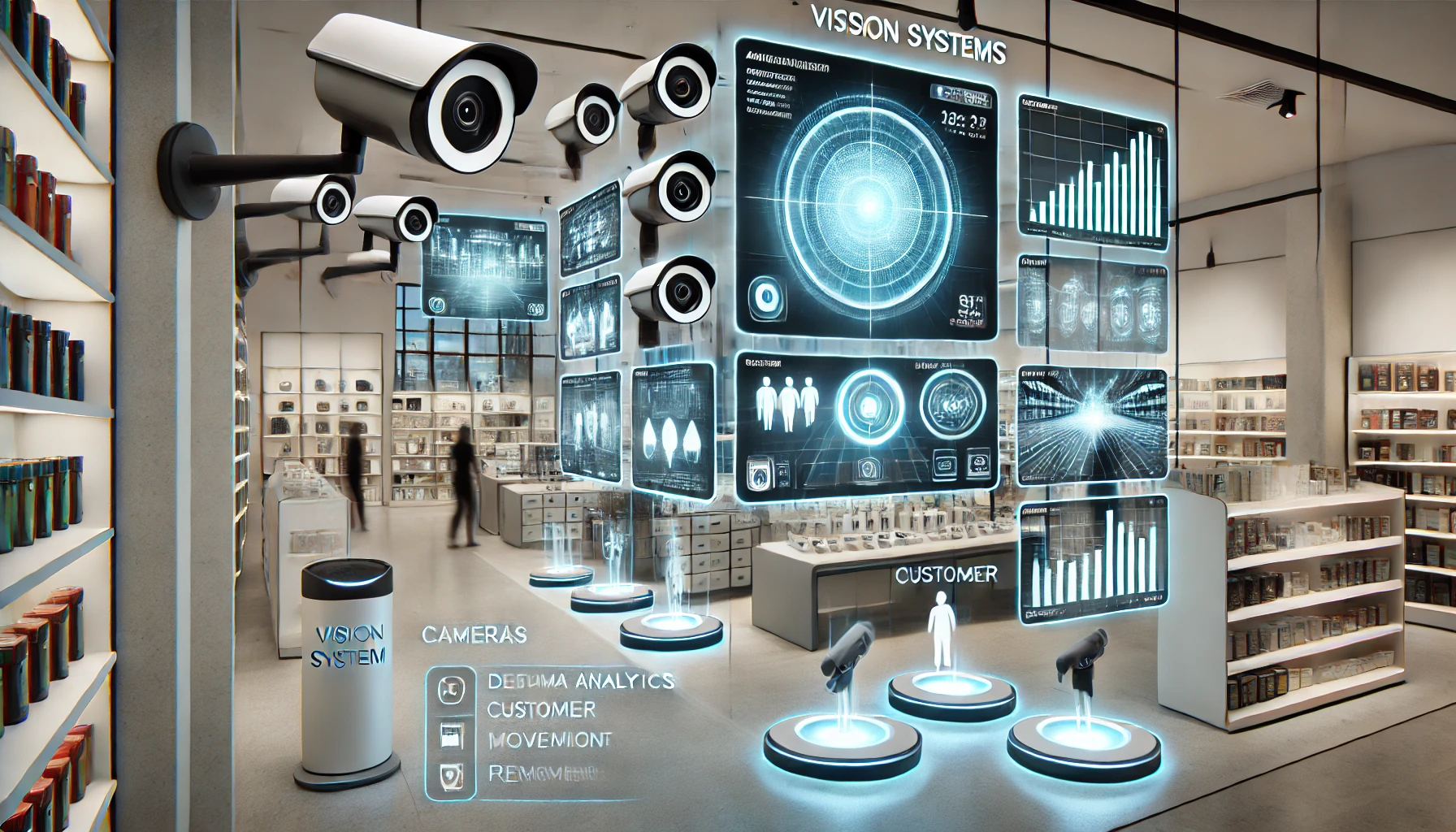Vision Systems in Retail: a Revolution in Management and Customer Experience
In today’s fast-paced technological world, vision systems are becoming a key tool in the retail industry. Thanks to advanced image analytics, artificial intelligence and machine learning, they not only enable optimization of operational processes, but also significantly improve the customer experience.
Application of Vision Systems
Vision systems in retail include a variety of solutions such as surveillance cameras, customer behavior analyzers, and facial and object recognition technologies. With these, retailers can track customer movements inside the store, analyze the popularity of specific products, and optimize shelf layout. For example, by monitoring which products attract the most attention, stores can strategically place them in high-traffic areas.
Security and Loss Reduction
Video systems also have security applications. By analyzing images in real time, they can detect behavior that suggests theft, allowing staff to intervene quickly. In this way, retailers record a significant reduction in losses, and thus can increase their profits.
Increasing Personalization and Customer Experience
Vision technologies also allow the collection of customer data, which promotes personalization of offerings. By analyzing purchase patterns, retailers can tailor promotions and product recommendations, which in turn increases customer satisfaction and brand loyalty.
The Future of Vision Systems in Retail
Year after year, the capabilities of vision systems in the retail industry will grow, and their implementation will become an essential part of competitive strategies. The ability to effectively analyze data and respond to customer needs will become a key success factor for futuristic retailers.
In conclusion, vision systems in the retail industry are not only a tool to facilitate operations, but also a strategic element that shapes the future of the customer-brand relationship. Their importance is expected to grow, and innovations in this field will bring even more benefits to both parties.

